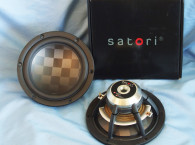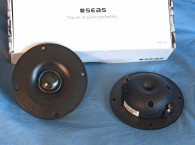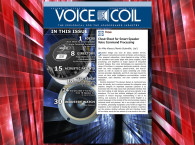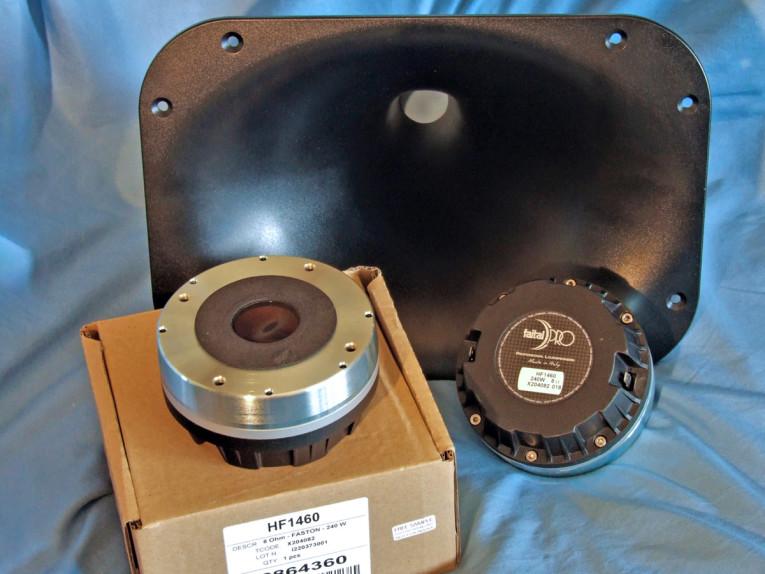
In terms of features, the Faital Pro HF1460 is designed for use with 1.4” throat horns, which means it has a 35.8mm (1.4”) throat diameter and a carbon fiber diaphragm driven by a 86mm (3.4”) diameter voice coil wound with aluminum wire on a high Qm non-conducting Kapton former driven by a neodymium (neo) ring magnet, plus a 1kHz recommended crossover frequency (second-order or higher high-pass filter). Other features include a 120W AES power handing rating (240W maximum power handling defined as 3dB beyond normal power handling), 109dB (1W/1m sensitivity, an annular phase plug design, and standard solderable terminals.
I believe the Faital Pro HF1460 is only the second carbon fiber diaphragm compression driver that has been introduced to the pro sound industry, the first being the Eminence N314X 1.4” compression driver (May 2020 issue of Voice Coil’s Test Bench). In terms of musical timbre, I have always been a huge fan of carbon fiber. With the introduction of Textreme cones and diaphragms, I have observed that the subjective sound quality of the new generation of cross-woven carbon fiber diaphragms and cones is similar to Beryllium. While not identical to Beryllium, this thin and very stiff material does have a very detailed upper harmonic range, which lends to the perception of overall musicality. Photo 2 shows the Faital Pro carbon fiber diaphragm along with the acoustic foam damped rear chamber. I regard this as a very important entry into the world of high-end compression drivers.
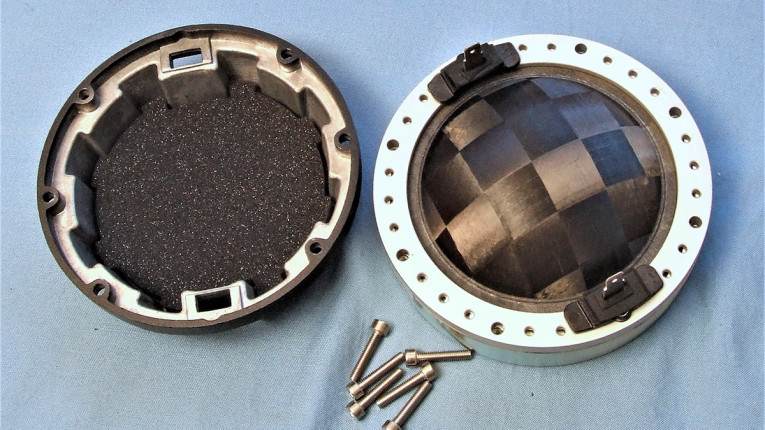
The horn supplied for use with Faital Pro HF1460 was the LTH142. This elliptical tractrix flare horn is a 1.4” (35.6mm) exit bolt-type was made from injection-molded PC/ABS, and provides a 60° x 50° coverage pattern and an 800Hz cut-off frequency, making it a good match for the HF1460 compression driver. Figure 1 gives the directivity index curve for the LTH142, which has a very smooth continuity from low to high frequency, while the horizontal and vertical directivity (beamwidth) maps for the LTH142 are shown in Figure 2 and Figure 3, with the horizontal and vertical polar plots displayed in Figure 4 and Figure 5.

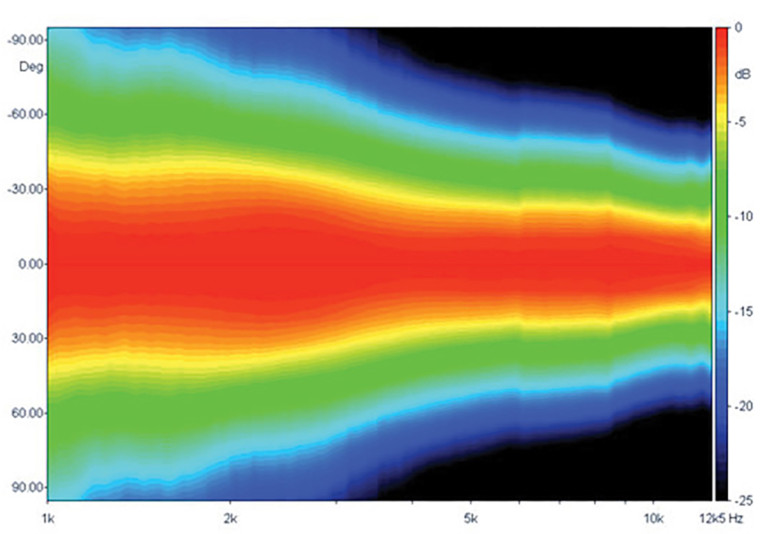



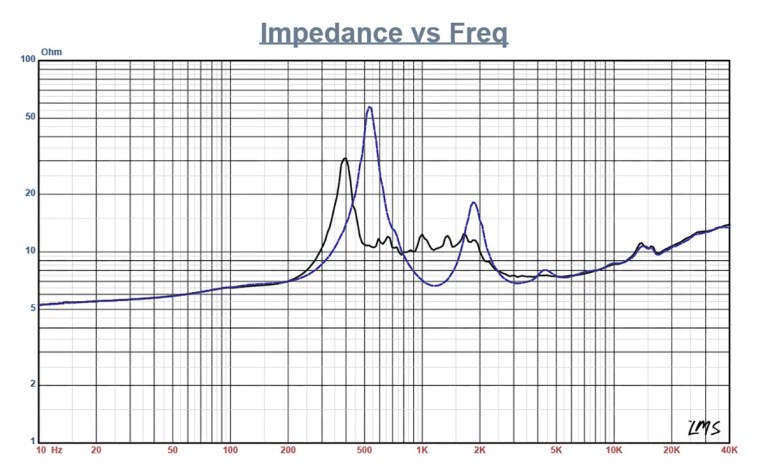
For the next set of SPL measurements, I free-air mounted the Faital Pro HF1460/LTH142 combination without an enclosure and measured the horizontal on- and off-axis using the Loudsoft FINE R+D analyzer and the GRAS 46BE microphone (courtesy of Loudsoft and GRAS Sound & Vibration) at 2.0V/0.5m, normalized to 2.83V/1m using the cosine windowed FFT method. All of these SPL measurements also included a 1/6 octave smoothing, which approximate the 100-point frequency response resolution I used with LMS for a number of years. Note, since Faital Pro supplied the directivity maps and polar plots for the LTH142, I chose not to do the vertical SPL measurements, instead including just the horizontal polar plot.
Figure 7 illustrates the on-axis frequency response of the compression driver/horn combination, which is a very smooth ±2dB from 600Hz to 8kHz with no major anomalies and with a declining response as frequency increases above 5kHz, and extending to somewhat beyond 19kHz, requiring the usual horn equalization.

Figure 8 depicts the on- and off-axis response in the horizontal plane. Figure 9 displays the normalized horizontal plane response. Figure 10 shows the CLIO Pocket analyzer-generated 180° horizontal polar plot (in 10° increments with 1/3 octave smoothing applied). Last, Figure 11 shows the two-sample SPL comparison, with the two Faital Pro HF1460 compression driver samples to be very closely matched ≤ 0.3dB throughout the operating range of the transducer up to 8kHz with a minor ±0.5 above 8kHz.
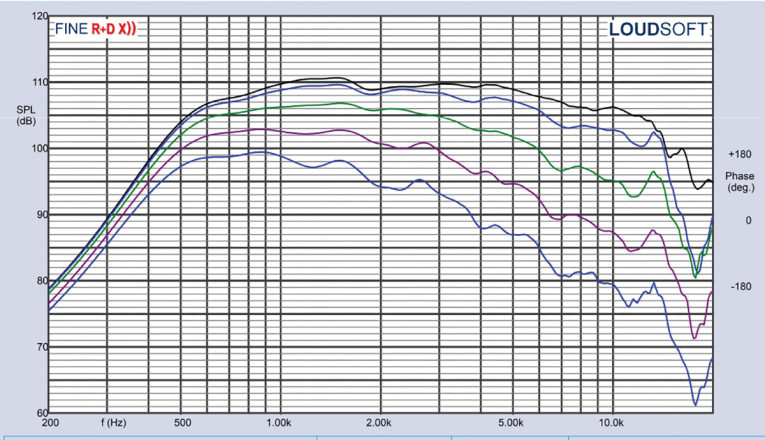
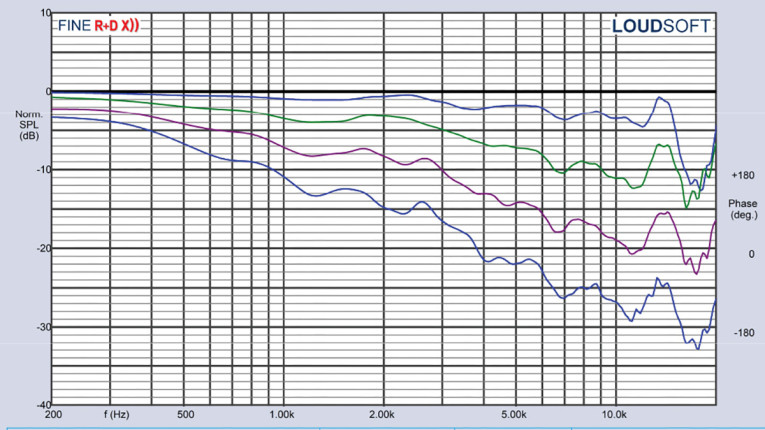
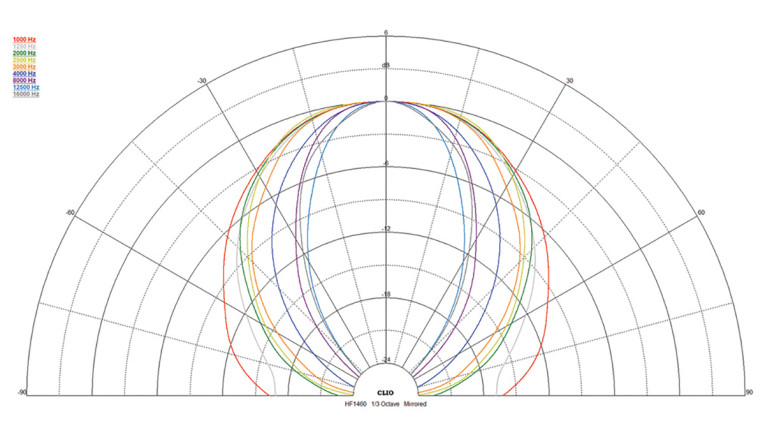
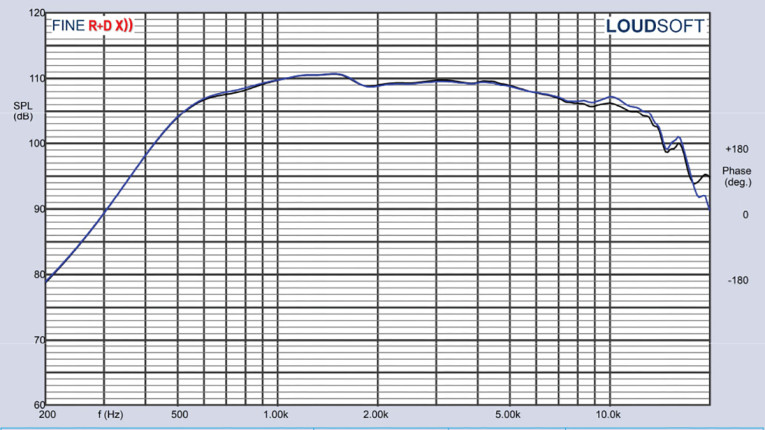
I set up the Listen, Inc. AudioConnect analyzer, SoundCheck 20 software, and the Listen Inc. ¼” SCM microphone to measure distortion and generate time-frequency plots (equipment courtesy of Listen, Inc.). For the distortion measurement, I mounted the HF1460/LTH142 combination in free-air in the same manner that was used for the frequency response measurements, and set the SPL to 104dB at 1m (1.50V determined by using a pink noise stimulus generator and internal SLM in the SC20 SoundCheck software). Then, I measured the distortion with the Listen ¼” measurement microphone located 10cm from the mouth of the horn. This produced the distortion curves shown in Figure 12 (red curve = second harmonic, blue curve = third harmonic). Note the third harmonic distortion is mostly less than 0.05% throughout the operating range of this high-frequency transducer.
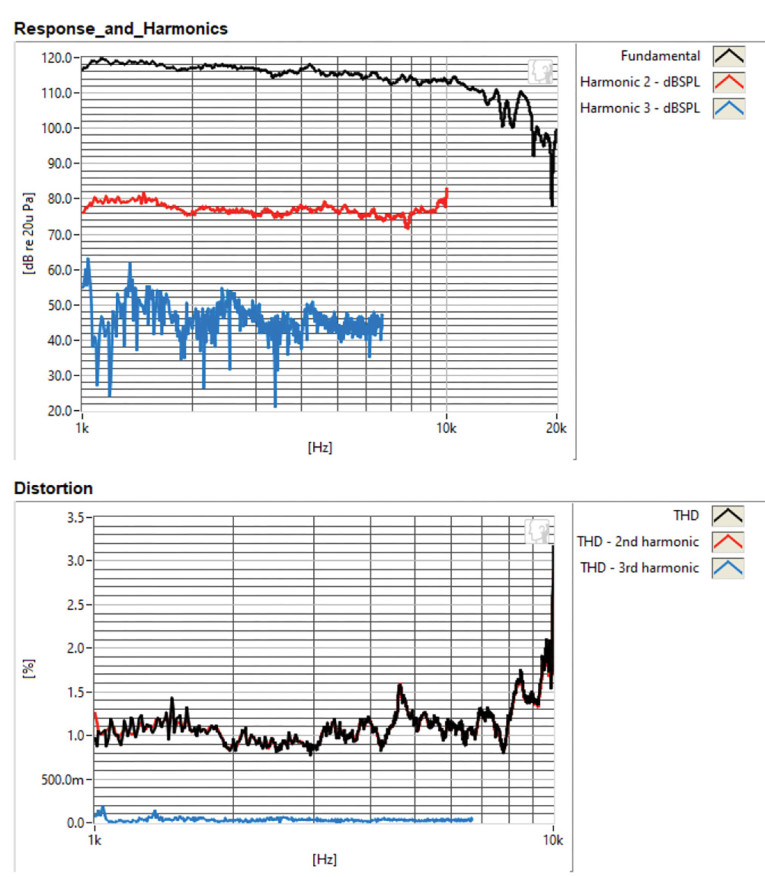
I then set up SoundCheck 20 to generate a 2.83V/1m impulse response for this driver/horn combination and imported the data into Listen’s SoundMap Time/Frequency software. Figure 13 shows the resulting cumulative spectral decay (CSD) waterfall plot. Figure 14 provides the Short Time Fourier Transform (STFT) plot.
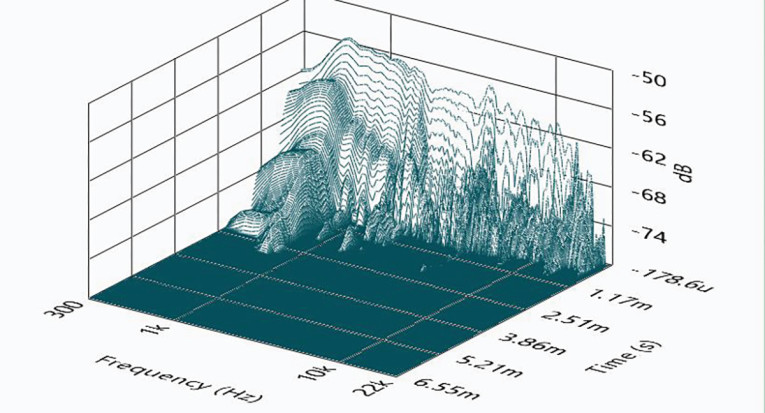
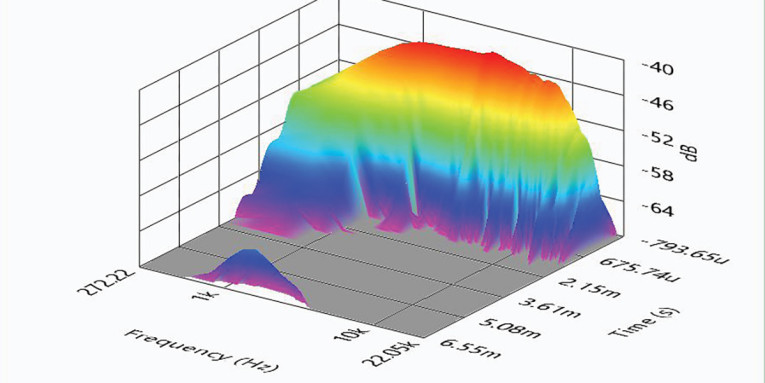
This article was originally published in Voice Coil, September 2022




